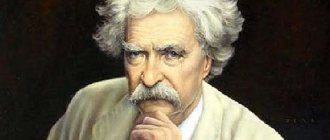- Definition of the concept
- History of the term
- Basic techniques
- Listening Techniques
- Areas of use of methods
- Active Listening Techniques
Communication skills make a person’s social life complete and varied. They allow you not only to exchange information in the form of dry facts, but also to analyze it on a subconscious level, remember it, and give a personal assessment.
Active listening helps avoid conflicts
People can rarely truly hear each other. This leads to certain problems in relationships: lack of understanding, frequent conflicts and hidden grievances, breakdown of relationships. The ability to listen and hear your interlocutor is priceless; it allows you to find harmony in your personal life and establish pleasant and beneficial social connections.
Definition of the concept
A complex communication skill that facilitates the semantic perception of everything the interlocutor says - active listening. Every person can master it perfectly; it is only important to want it. Active listening techniques are simple and are described in detail in the psychological literature.
This technique clearly demonstrates that all participants in the conversation are interested, and not just the speaker. Active listening makes it easy to direct the conversation in the right direction, avoid conflicts, and leave a pleasant impression. In the process of communication, a trusting atmosphere arises; people begin to empathize with the interlocutor, understanding his thoughts and even feelings at a particular moment.
Active listening techniques are often used by psychologists when seeing clients. The specialist thus enters into the position of the interlocutor, plunging headlong into his problem. This helps to find the right solution and push the client towards it without giving a direct answer.
This technique activates the mechanisms of empathy in the subconscious, which is why active listening is often called empathic listening. It helps to establish relationships between:
- superior and subordinate;
- parents and children;
- teacher and student;
- peers.
Domestic and foreign psychology knows many examples confirming this. Knowing what active listening is, you can reach unprecedented heights and be known as a sensitive and tolerant interlocutor. And those around them are drawn to such people, wanting to help them in everything as a thank you for their sensitivity.
Active Listening Techniques
History of the term
The public first learned about the concept of active listening from family psychologist Julia Gippenreiter. During her practice, she drew attention to the fact that many family conflicts can be avoided if you listen carefully to each other and be ready to perceive the meaning of words in the context in which they were spoken. If something is not clear, you can always ask a series of clarifying questions and delve into the answers to them.
Yu. Gippenreiter developed the basic techniques of active listening, which are successfully used to this day.
It is wrong to assume that purely professional psychologists can operate on them. Anyone can master the technique the first time.
The ban on feelings and why it is dangerous
When listening empathically, you cannot say: “you’re pushing yourself too hard!”, “is this a problem?”, “you got angry out of nowhere!”, “you found something to be offended by,” “never mind!”, “imagine how they live.” starving people in Africa..."
We often say these phrases, thereby trying to help the interlocutor, to convince him that in fact everything is not so bad. We want the best. But in fact, with such phrases we devalue the feelings of our interlocutor. How does he hear such phrases? “You’re wrong,” “you’re too vulnerable,” “too self-centered,” “you’re overreacting,” “you can’t control yourself.”
How to listen to a person so that you hear? Empathic listening.
Phrases like: “be more positive!”, “smile!” “Is this a reason for a bad mood?”, we not only unconsciously devalue a person’s experiences. We also deny his right to feel what he feels.
Basic techniques
The active listening technique always consists of many techniques to achieve the desired effect. Experts say that the final goal should always be information undistorted by the prism of perception.
The listener carefully looks at the interlocutor to hear not only the words, but also to evaluate his posture, gestures, and facial expression. Such “little things” can play a big role; they will tell you how sincere the interlocutor is. A listener interested in a conversation is always tuned in “on the same wavelength” with his opponent, he listens to his words with his whole body. From the outside it looks like this:
- eyes are directed at the speaker or focused on an object located next to him;
- the body leans slightly forward;
- the face is turned towards the interlocutor;
- a slight tension is felt throughout the body, it is noticeable that the listener is not “having his head in the clouds”, but is listening attentively.
Any technique of attentive active listening is based on non-verbal perception by the brain and interest in the conversation. To put it simply, certain parts of the brain receive signals that the muscles are tense, the body is turned towards the interlocutor, and the consciousness is not loaded with other thoughts. We are ready to delve into the essence of what was said to the maximum.
Among the techniques and techniques of active listening, there are three main ones:
- echo;
- interpretation;
- paraphrasing.
Echo is the most common and favorite trick among psychologists, which allows you to liberate your interlocutor and tune in to the perception of what he is talking about. In practice, it looks like this: with a certain frequency, the last words of some phrases are repeated by the listener after the speaker, like an echo. This is done softly, not too loudly and with a questioning intonation. These rules of active listening must be followed exactly; they are simple and understandable. Our ancestors used them, and they had much fewer conflicts between loved ones and colleagues. Interpretation allows you to increase the significance of the conversation for both interlocutors, helps them fully understand each other, and increases the level of trust between them. After the speaker has finished, you can retell his saying in your own words, and then guess how correctly the interlocutor understood the meaning.
Paraphrasing is repeating a phrase said by the interlocutor, only in different words. This is a kind of clarification. The listener decides for himself whether he correctly understood what he was just told.
This technique of active listening also has a lot of useful benefits for the speaker; he realizes the importance of what he says and feels respect for his person. This allows him to be more sincere in his words.
Active listening is divided into two types:
- feminine - is empathic due to the ability of the weaker sex to empathize with the interlocutor, to be more open in communication; ladies typically use paraphrasing techniques, the emphasis is on articulating emotions and sensations;
- masculine - provides for rational reflection, very popular in the process of business negotiations; men are stingy with emotions, so they use interpretation techniques with many clarifying questions.
Empathic listening is also not alien to some men who have a gentle character and a sensitive perception of the world around them. It brings good results depending on the situation, as well as on the individual characteristics of the interlocutor. Active listening is a direct path to the pinnacle of self-knowledge, a chance to discover the best qualities in yourself that some are not even aware of.
Examples of active listening techniques
Rules for Empathic Listening
1. You need to tune in to listening: forget about your problems for a while, free yourself from your own experiences, try to get rid of ready-made attitudes and prejudices about this person. Only in this case will you be able to feel what your interlocutor feels, to “see” his emotion.
2. In your reaction to your partner’s words, you must accurately reflect the experience, feeling, emotion behind his statement, but do it in such a way as to demonstrate to your interlocutor that his feeling is not only correctly understood, but also accepted by you.
3. It is necessary to take pauses. After your answer you need to remain silent. Remember that this time belongs to the interlocutor; do not occupy him with your additional considerations, explanations, and clarifications. A pause is necessary for your partner to understand his experience.
4. It must be remembered that empathic listening is not an interpretation of the secret motives of his behavior hidden from the interlocutor. You just need to reflect your partner’s feeling, but not explain to him the reason for this feeling. Comments like: “You really would like to be paid attention to all the time,” as a rule, cannot cause anything other than rejection and defensiveness. Especially if these words are spoken at the beginning of the conversation, when trust has not yet arisen.
5. It makes sense to use the empathic listening technique only when the person himself wants to share some experiences with you. If he doesn’t want to talk about it with you, but you want to discuss it with him, using empathic listening is impossible.
In communication, it is important not only the ability to listen, but also the ability to construct your speech in such a way as to be easier to understand by listeners, without provoking the interlocutor to have a negative attitude towards yourself and what you say. Communication will bring positive results if the doctor and patient are on the same wavelength. To do this, it is advisable to identify and take into account the individual characteristics of the patient (as well as colleagues, boss, etc.), get on the same wavelength with him, and also:
- start with what you agree on (i.e., with what you both know and about which your opinions coincide);
- avoid excessive self-confidence, treat your statements critically;
- when persuading, use arguments (sufficient and meaningful for the interlocutor, not for you), and not pressure;
- try to separate your views and impressions from the objective characteristics of things and phenomena;
- use monologues as little as possible;
- do not label the interlocutor and his statements;
- before objecting, make sure that you correctly understood the interlocutor using the active listening technique, then agree with that part of his statements with which you can agree, and only then object tactfully and reasonably.
Sometimes situations arise in which you will be unhappy with something. How to express this dissatisfaction so that a person wants to change his behavior and
I wasn't offended by you. Use the “sandwich method”: wrap the unpleasant comment into praise. Before and after criticism, say something nice, something you like about the person or their behavior. In addition, instead of using the form of a comment or complaint, use the form of a wish or constructive suggestion. With this form of presenting information, it is possible to avoid the automatic resistance that arises in cases where accusations are made.
Let's consider what prevents the establishment of trusting relationships and full-fledged interaction and fruitful communication between the doctor and the patient.
COMMUNICATION BARRIERS
As mentioned above, personality traits
— psychological characteristics of partners that make communication difficult. These include such personal traits of the interlocutor as egocentrism (inability to take the position of another person), authority, desire for dominance, categoricalness (“On any issue there are two opinions - one is mine, and the other is wrong!”), intolerance to shortcomings others, aggressiveness. Both inadequately high and low self-esteem, which sometimes occurs among both doctors and patients, have an extremely negative impact on the communication process. A person with low self-esteem is touchy: the most neutral situations can be perceived by him as an infringement of his rights; in human relationships he looks for subtext that is unfavorable for him. The apparent need to defend oneself can lead to aggressive reactions, outbursts of anger, and irritation.
Laughter, a smile from the interlocutor - even they can be interpreted by the patient in a negative sense - as ridicule, a frivolous attitude of the doctor to his problem. Therefore, a smile, a joke, a compliment - these
the most powerful tools in establishing contact and further communication, must be used by the dentist carefully, since in front of him there may be a person with low self-esteem, a patient with depression, a serious, incurable illness, etc.
There is a barrier of negative emotions in communication .
A person overcome with anger or full of resentment is not capable of normal communication. He is unable to adequately perceive his interlocutor. Experiencing a feeling of disgust, irritation, or fear towards a patient, it is foolish to expect that he will be able to understand him correctly. Meanwhile, some patients can cause such feelings “out of habit”, as they may be poorly dressed, unkempt, drunk, make unreasonable demands or accusations against you, etc. The negative feelings that arise are not always recognized by the doctor. Often, medical personnel experience fear of death, illness, ugliness, poverty - and unconsciously try to isolate themselves and minimize contact with patients who cause these fears. Once you recognize this fear in yourself, you can overcome it.
There are perception barriers in communication .
The first moment of a person’s perception by a person largely determines further interaction, creates an appropriate attitude, which can be positive or negative (in the latter case, a lot of effort will then have to be applied to change it). Significant information about another person is carried by such elements as clothing, hairstyle, and clothing accessories. It is not only the form of clothing itself that is important, but also its suitability for the given situation. A discrepancy between the doctor’s appearance and the patient’s expectations can negatively affect further interaction and create mistrust.
Try to find out the expectations of your patients regarding the appearance of the doctor (office) and try to
Be careful not to shock them with a bright tattoo or extravagant hairstyle, etc. If you are very tall, or you are a left-handed dentist, or you are allergic to perfume odors, try to ensure that first-time patients are properly prepared for this.
The perception of a person can be carried out under the influence of stereotypes,
complicating further interaction. In this case, already the first moments of contact are colored by a positive or negative attitude. Thus, the patient begins to be perceived by the doctor not on the basis of some of his real traits and characteristics, but in the light of the doctor’s pre-existing assumptions and assumptions that arose from previously received information about the patient or on the basis of national, social, and religious stereotypes.
Nonverbals play an important role in the formation of first impressions.
(i.e. non-speech, non-verbal) methods of communication that are not always recognized by partners - intonation and timbre of the voice, postures and gestures, facial expressions, eye contact.
Nonverbal components (means) of communication. Nonverbal (non-verbal) means of communication include:
- intonation, voice timbre, pauses, speed of speech, etc.;
- facial expressions and pantamimics;
— distance in communication (distance between speakers);
- eye contact.
Psycholinguist researcher Merobyan believes that only 7% of information is transmitted through the content of speech, 38% of information is transmitted by paralinguistic components, and the remaining 55% by facial expressions and pantomimes.
The perception of a person by a person largely depends on the voice
— its intensity (loudness), height,
timbre, intonation. The volume of the voice is associated with the individual manner of managing the communication space. Mastery of your voice implies an intuitive choice of the volume that is needed for a given room and given circumstances of a conversation. People who have the habit of speaking louder than they should, seem to take over the space in which not only they, but also other people exist. Increased volume is generally characteristic of excited, tense communication. Speakers of loud speech are perceived by others as dominant, wanting to attract attention (one should not forget about possible hearing impairment, in which a person’s perception of the loudness of his own speech is impaired).
The speed of speech can tell a lot about a person’s temperament and emotional state. An excited person speaks faster than usual, slightly missing words. A depressed, tired person speaks more slowly and monotonously, reducing the speed and volume of speech towards the end of the phrase.
To establish good contact, both interlocutors meet each other halfway. During a conversation, a doctor will more easily establish an atmosphere of trust by adapting to the patient’s speech, slightly changing the characteristics of his voice, if possible adapting to his speech speed, but maintaining an adequate volume level.
To create a trusting, calm atmosphere among the non-verbal components of communication, pantomime occupies an important place -
human postures and gestures. The interlocutor’s posture may be tense—signaling that the person has “collected himself” and is ready to fight back in anticipation of an unpleasant message; “closed” - arms crossed on the chest, body tilted away from the interlocutor; aggressive - hands clenched into fists; as well as calm, comfortable, relaxed, designed for long-term communication. To create an atmosphere
cooperation, attentive listening, in which the interlocutor is usually not rushed, you must sit in a comfortable, calm, stable position.
If an anxious patient sits tensely in the dental chair, you can try to reduce his fears by provoking him to change his position. In this case, it is more effective not to simply say: “make yourself comfortable,” but to invite him to rinse his mouth or perform some other action.
An important factor in communication is distance.
in which we feel comfortable talking with a person. The distance that we try to maintain when communicating with different people most depends on the nature of the communication (Hall) (intimate, personal, business or public communication), as well as on the individual characteristics of the interlocutors, their social status, national culture (you can read more about this read in the book “Grandmaster of Communication”).
The distance that is convenient for you when communicating with a patient may not always be acceptable for him: a chair that is too far away for the patient will make some people want to move it towards you, another will feel insecure because you are looking at it, and a third will feel quite comfortable state.
At a dental appointment, as with some other medical procedures, there is a violation of the “intimate zone” of both the doctor and the patient, at the social level of communication. For the doctor, experience comes with getting used to it, and for the patient, although he is theoretically prepared for this situation, in practice it can increase tension and anxiety. Therefore, before proceeding with the examination, especially at the first appointment, it is necessary to establish a certain level of trust, giving the patient some time for this. You should not begin contact with your interlocutor with an offer to sit in a special medical chair or lie down
for inspection, etc. In addition, if one of the interlocutors is sitting and the other is standing, this obviously provokes an unequal relationship and can cause a negative reaction that makes communication difficult.
is very important in establishing good contact and in further communication .
It has long been attributed special importance in establishing an emotional connection with an interlocutor and in conveying subtle shades of meaning. There are general patterns of perception of eye contact, similar for all people, and individual characteristics associated with the leading channel of perception for a particular person, national characteristics, etc. Thus, the world distinguishes between “contact” and “non-contact” cultures, in which there are unspoken generally accepted norms about when it is possible and when it is not possible to look into the eyes of your interlocutor. In Russia, the “contact” cultural tradition predominates, so people who avoid eye contact are assessed negatively. However, not everything is so simple, and a long direct gaze is often perceived as a reduction in psychological distance, which is not always pleasant for the other interlocutor, and can be perceived as dominance, challenge, or aggression. It has been observed that people look into each other's eyes more often if the distance between them is large, and try to avoid eye contact when the distance is close. Psychological studies show that the average time during which direct gaze into the eyes of a stranger can be tolerated without discomfort is approximately 3 seconds. Thus, both the lack of eye contact and its abuse are dangerous for further communication.
Sometimes doctors have a “blind” look, when the eyes are turned to the patient, but the gaze seems to pass through him, or does not reach him. This is often a consequence of psychological fatigue, “emotional
emotional burnout*, desire to isolate oneself from numerous contacts. This view completely destroys the possibility of full communication, leaving only formal contact.
Conflict experts have developed a number of conditions for maintaining and developing cooperation that will help establish therapeutic communication and prevent the development of conflicts at a dental appointment:
— Consent, consisting in the fact that the patient is involved in the treatment process (informed consent),
— Practical empathy, which involves seeing the situation from the patient’s side, understanding his difficulties and concerns, expressing sympathy and desire to help;
— Maintaining reputation - treating the patient with respect, even if your interests diverge;
— Elimination of discrimination, which prohibits emphasizing differences in social status, age, etc., or any superiority;
— Psychological “stroking”, purposefully maintaining the patient’s positive emotions;
- Non-sharing of merit - this achieves mutual respect and removes such negative emotions as envy and resentment (especially important when interacting with colleagues);
— Individual approach to the patient - taking into account his individual characteristics and emotional state.
In order to better understand patients, colleagues, and management, you can take advantage of new modern developments in such a psychological direction as NLP - neuro-linguistic programming.
In the 70s, R. Bandler and D. Grinder discovered priority ways for a person to perceive new information. L. Bradway studied the same features
individual perception in children of preschool and school age.
A person perceives the world around him with the help of all his senses, but at the same time unconsciously gives preference to some over others. This innate feature dictates which method of cognition to choose - visual, auditory or tactile - and predetermines the choice of the object of attention, the speed of perception, and the type of memory. This predominance does not exclude other sensations, but it has the greatest influence on the perception of a given person, and the significance of this circumstance has only recently been realized.
In the psychotherapeutic direction of NLP (neuro-linguistic programming), there are 3 types of people according to the leading channel of perception: kinesthetics - the sensory channel, visuals - the visual channel, auditory - the auditory channel, and the 4th type of people who do not have a leading channel - logicians. There are also polymodals - people in whom all channels are equally well developed (this can be achieved with special training).
The characteristic features of these types are presented in Table 3.
Table 3 Types of people by leading channel of perception
| \ Types of Manifestation \^ | Visuals | Kinesthetics | Audials | Digitals |
| Memory | Visual memory | Memory for actions | Auditory memory | Logical memory |
| Eye contact | Looking into the eyes of the interlocutor: looking to hear | Looking down, touching is more important than looking | Eyes downcast, not looking in order to listen better | Looking over the head or forehead, avoiding eye contact |
| Voice | Voice high, sonorous | Low, thick | Melodic, expressive, changing | Monotonous, intermittent, clamped |
| Speech | Speech and movements are fast | Speech and movements are slow | Very verbose | There is little movement |
| &rater words | It seems beautiful, the view, the perspective... | It’s convenient, I feel, to grasp... | Harmonious, sounds, echo, tone... | Reasonable, functional, I know, logical... |
Patients belonging to different types report their complaints differently, their attention is focused on different manifestations of the disease, they hear and remember the doctor’s recommendations differently. The patients’ speech will use characteristic words “I see”, “I feel”, “I hear”, “I think”.
Visual,
when arriving for an appointment, he will sit further away and will carefully look into the doctor’s eyes during a conversation, but will fall silent if the doctor looks away to make an entry in the medical record.
Such a patient will easily answer the question: “What does it look like?”, and with difficulty answer the question: “What kind of pain?” When convincing him of the need for treatment, try to show
him all
the prospects, “paint a clear picture*
of recovery.
Kinesthetic
on the contrary, he will sit closer and easily describe his well-being in sensations. Ask him: “How do you feel now?” and don't be afraid to move over and touch him. A kind touch can calm him down (kinesthetic dentists often use this). If such a patient stops you in the corridor to ask about something important, he will stand very close to you and may even hold you by the hem of your robe. He will most likely be happy to go to physical therapy or massage, but will only remember what he did himself. He will remember recommendations “by ear” or from a book much less well.
Auditory ~
people with well-developed speech and auditory memory. They are happy to talk with a doctor and are offended and do not trust those doctors who cannot tell them in detail about their illness and the course of treatment.
Digital
It is also necessary to talk in detail and clearly about the stage of their disease, consequences and prospects, and clearly and consistently explain the treatment plan.
(You can read more about kinesthetic, visual, auditory and digital in any book on NLP, for example A. Lyubimov “The Mastery of Communication”)
In addition, it is possible to determine, using psychodiagnostic methods (observation, conversation or psychological testing), such personal characteristics of patients as temperament or its individual properties, character accentuations, socionic type, level of anxiety, and build therapeutic interaction taking into account this knowledge.
PROFESSIONAL RISK INSURANCE FOR DENTISTS
The study of the problem of the relationship between doctor and patient when providing medical services to dental patients is becoming increasingly relevant, which is primarily associated with a significant increase in conflict situations, which have a persistent upward trend.
It can be stated with a certain degree of confidence that the transition of a significant part of dental medicine to a reimbursable basis entails the application of appropriate legal relations governing these services. These legal relations acquire particular significance in cases of improper provision of dental care. This dictates the need to develop a number of measures aimed at both resolving conflicts and increasing control over the quality of dental services.
Numerous works are devoted to the issues of assessing the quality of dental care, however, they do not sufficiently show the role of the dental association in organizing a pre-trial medical examination in resolving conflicts between the patient and the doctor when providing dental services. We want to introduce readers to the experience of pro-
production of medical and dental examinations and examinations conducted by the Supreme Expert Council of the Dental Association of Russia (StAR).
The Supreme Expert Council for Dentistry (HEC) was created by the decision of the StAR Council in 1998. The basis for this decision was primarily the concept of the development and implementation of the StAR dental insurance program, which provides professional liability insurance for dentists. A significant impetus for the creation of the StAR dental insurance program was the numerous appeals to the association of doctors, who, under the conditions of modern legislation, have become virtually defenseless from legitimate, and often far-fetched claims of patients and court decisions, as a rule, resolving conflict situations in favor of patients.
To resolve conflicts at a professional level, the Higher Expert Council on Dentistry was created, which began to consider claims from patients dissatisfied with the quality of dental services provided to them, heads of dental organizations where a conflict situation arose, as well as insurance companies where the doctor is insured, with a request to give an objective assessment dental services. The decision to create a wind farm was also facilitated by the order of the Ministry of Health of the Russian Federation No. 363 dated October 24, 1996, which provided for the creation of departmental and non-departmental expert bodies, which were entrusted with the responsibility of monitoring the quality of dental care. Non-departmental examinations are carried out either by chief specialists of professional dental associations, or by employees of various expert institutions or public organizations, such as associations for the protection of consumer rights.
tel. However, even in these cases, expert conclusions from a legal point of view are not always correct.
Studying the issue of organizing a medical examination of the quality of the service provided showed the urgent need for such a specialization as an expert dentist who would have appropriate special training and could legally participate in the examinations. Currently, when resolving conflict situations, only one medical institution acts as an arbiter - the forensic medical examination bureau, only the conclusions of which, according to the law, are required to be taken into account by the court, and are one of the types of evidence in the case. At the same time, the need for a dental expert is dictated by life itself, since there is often a need to quickly resolve the issue, while forensic medical examination does not have such capabilities, which is associated with the legislative procedure for its appointment (appeal to the court, which, before execution examination is trying to resolve the conflict amicably, collecting documents, selecting appropriate specialists due to the lack of dental experts in the bureau’s staff), and the experts of the forensic medical examination bureau do not have special knowledge in the field of dentistry.
When creating the WEC at StAR, the leadership of the association proceeded from the fact that the doctors of the relevant profile included in the commission would perform expert functions on a voluntary basis. However, at the initial stages of the functioning of the expert council, certain organizational difficulties arose. First of all, the question arose about its legitimacy, and then the creation of a structure that would clearly comply with the requirements of legislative and regulatory acts for the general principles of conducting
examination, drawing up its conclusion with drawing conclusions.
Our experience has shown that the most acceptable in this regard are the general principles of work of the forensic medical expert commission, which provide for all stages of organizing the examination: the specifics of studying patient documents (application, contract, medical records, etc.), the formation of a commission of relevant specialists (therapist, orthodontist, orthopedist, surgeon), examining the patient, formulating the conclusions of the expert opinion and its execution. Assessing the goals, objectives and functions of the forensic medical examination bureau, we used its operating principle with certain adjustments.
Over the past four years, the EEC has considered 59 cases related to assessing the quality of dental services, which were distributed by year as follows: 2000 - 15 cases, 2001 and 2002 - 9 each, 2003 - 12, and in 2004 - 14 cases. The given quantitative indicators indicate a growth trend in examinations.
Of all the examinations carried out, in 80% of cases the commission identified serious omissions in the diagnostic and treatment process, which served as grounds to recognize the service as low-quality. Moreover, in 34 conflict situations, insurance companies reimbursed treatment costs to patients. In 10 cases, patients insisted on hearing the case in court, which also confirmed the conclusion of the EEC and mostly satisfied (9 cases) the patients’ claims.
On their own initiative, 7 patients applied to the Supreme Expert Council, and at the request of the heads of dental institutions - 18 cases. Among the plaintiffs, the largest proportion were women (83.1%) and a smaller proportion were men - 16.9%. Mostly residents applied for examination
Moscow (46 people), rarely residents of the Moscow region (5 people) and other regions of the country (8 people).
Analysis of the expert material allowed us to identify 5 main reasons that served as the basis for patients to contact the commission, namely:
— presence of persistent pain after endodontic treatment and/or prosthetics — 24 cases;
— dysfunction of chewing — 18 cases;
- combination of chewing dysfunction and pain - 6 cases;
- claims to the aesthetic quality of the work performed, despite the fact that the solution to these issues is not covered by insurance under the dental insurance program StAR - b cases;
— refusal of further treatment in a clinic or with a given doctor after consideration of the plaintiff’s claim by a departmental commission that established violations in the provision of dental services, even if they were insignificant and could be easily eliminated — 5 cases.
The largest number of complaints about the quality of treatment were made to orthopedic doctors (69.5%), to a lesser extent - to therapists - 20.5%, and in isolated cases to orthodontists and surgeons - 5% of all cases.
Analyzing the defects in the provision of therapeutic care, it should be noted that we considered this activity not only as an independent type of service (12 cases), but also as one of the stages of preparing the patient for orthopedic treatment (7 cases), since improperly performed treatment may have further consequences on the results of prosthetics, as well as violations of technology during prosthetics can lead to therapeutic problems, which sometimes come to the fore in patient complaints.
The main complaints of patients regarding therapeutic treatment, considered by the BES commissions, were related to:
— the presence of pain after endodontic treatment due to perforation of the walls of the tooth root, removal of the filling material beyond the root apex, breakage of the endodontic instrument, development of the inflammatory process in the periapical tissues;
— fracture of thinned tooth walls after placing a filling;
— violation of aesthetics during the treatment of the frontal group of teeth;
— conflict situations that have arisen due to the amounts spent on treatment, which is caused by the patient’s lack of information by the doctor or misunderstanding of the provisions of the contract (for example, the patient often perceives the cost of one filling as the treatment of one tooth).
The study of medical documents, contracts and examination of patients allowed the commission to recognize these complaints as justified. At the same time, inconsistency was noted in the assessment of the causes of conflicts given in the statements of the plaintiffs and the attending physicians and even the heads of structural divisions and the dental institution. Often, in the doctor’s opinion, the service was performed correctly, and he does not see any violations. As a rule, this point of view is also supported by the internal commission, which indicates bias, corporatism and an attempt to departmentally protect the doctor.
Analysis of the results of examinations and examinations on conflict situations conducted by the Supreme Expert Council of StAR allowed us to identify the main shortcomings, errors and omissions in the work of dentists during therapeutic treatment.
1. Errors during the examination: incomplete or insufficiently thorough examination.
Diagnostic errors.
3. Tactical errors (errors when drawing up a treatment plan).
4. Technical errors (errors when performing manual procedures).
Deontological errors.
6. Omissions in maintaining medical records. The first three points are the treatment algorithm and
flow one from the other.
The most common omissions in the examination of patients when working as a general practitioner include the following:
1. X-ray examination is not performed before endodontic treatment;
2. pulp viability was not determined before the therapeutic intervention;
3. no additional examination methods or consultations of the patient with specialists were carried out when concomitant pathology was identified.
Thus, insufficiently thorough examination, failure to prescribe additional examination methods and consultations with specialists in related specialties leads to errors in diagnosis.
An incorrect diagnosis made by a doctor leads to the fact that an inadequate treatment plan is drawn up. This makes clear the meaning and importance of a high-quality examination, which, unfortunately, is very rare in therapeutic dentistry. The main attention should be paid to collecting anamnesis and analyzing the patient’s complaints, because Already at this stage it is possible to assume the nature of the pathological process or disease.
Technical errors are usually associated with manual procedures and are often caused by deviations
[
differences in the doctor’s actions from the standards and generally accepted norms and rules adopted by the association.
As our material shows, insufficient attention on the part of the doctor, inability to listen to the patient, and rescheduling of appointment times are the cause of the patient’s aggressive behavior, especially with an unstable emotional sphere.
Violating the principles of deontology, unfortunately , is also a common mistake. In particular, a doctor can afford not only to evaluate the work of another doctor, but also to criticize it. In this regard, I would like to emphasize once again that assessing the quality of the treatment provided is the prerogative of the expert. The general practitioner is obliged to ascertain the clinical situation of the oral cavity, the presence of a cause-and-effect relationship between previous treatment and the complications that have arisen, provide such information to the patient in a sensitive manner, and offer, if necessary, treatment.
An analysis of the examinations showed that the medical records of dental patients are maintained with serious violations. Moreover, even those medical records that were clearly rewritten after a conflict situation arose are filled out incorrectly, or they are maintained poorly even in the case when the patient notifies the doctor that he is not satisfied with the quality of treatment and will complain to “higher authorities.” This suggests that the overwhelming majority of practicing dentists either simply do not attach importance to documentation, or are not aware of the possible consequences of negligence in its management, despite the fact that various publications indicate the role of the quality of medical documentation when resolving disputes at the pre-trial and judicial stages.
Our experience shows that the main omissions in documentation are as follows:
,
— As a rule, attending physicians do not enter into the medical history information about the state of the dental system at the time of initial treatment.
— The dental formula is not filled in completely; as a rule, the medical history contains a symbol only for the tooth that underwent treatment.
— There is often no record of an X-ray examination after canal filling, which makes it impossible to control the quality of treatment and, in the event of disputes, is considered a defect.
— There is no information about the intended treatment plan as an element of informing the patient, and the stages of its implementation.
— X-ray data are not provided.
— The timing of follow-up examinations after completion of oral cavity sanitation is not specified.
Existing omissions in documentation and defects in the initial examination of patients do not always allow the commission to assess the dental status before treatment and are a reason for refusing to establish a cause-and-effect relationship between the doctor’s actions and the complication that has arisen.
It must be emphasized that if there are errors in maintaining outpatient records or there is no record in the medical history about the dynamics of treatment, everything is decided in favor of the patient. Therefore, if a doctor does not write a detailed medical history, he deliberately puts himself in the position of the accused.
At the same time, when the medical record contains detailed information about the disease, additional methods of examination and consultations with specialists, it is not difficult for the expert commission to resolve the issue of the absence of a cause-and-effect relationship between the occurrence, for example, of pain and the actions of doctors.
To illustrate, here are quotes from the case of patient G
Listening Techniques
Active listening methods are inextricably linked with our emotional sphere. To better understand the interlocutor and tune into his emotional background, several methods are used. The main criterion is empathy, which can manifest itself in three main forms:
- sympathy - an initially warm attitude towards others, the ability not to see or deliberately not notice their pronounced shortcomings;
- empathy - the ability to experience the emotions of an interlocutor in the “here and now” mode;
- sympathy is a strong desire to help the interlocutor solve his psychological problems.
Empathic listening involves the manifestation of one or more forms at the same time. The extent to which a person is able to empathize with the problems of others depends on the characteristics of his nervous system. But this quality is not always innate; constant work on oneself leads to the development and consolidation of empathic skills. During a conversation, a person not only listens to what others are telling him, but also shows various kinds of activity in the process. He constantly asks leading questions, and with his posture and gestures strives to prove that he is all attention. It is advisable at this moment to completely isolate yourself from the world around you, not to be led by extraneous thoughts, and try to drive away any prejudiced attitude towards others, if any.
In psychology, the following methods of active listening are distinguished:
- paraphrasing - all significant points are conveyed to the interlocutor in the form of feedback;
- summarizing - at the end of the conversation you need to briefly summarize what was said; if the information is misunderstood, the speaker will definitely say so;
- clarification - several times during the conversation you need to gently and quietly clarify whether the interlocutor is understood correctly;
- logical consequence - an attempt to determine to what extent all statements are interconnected by links in a logical chain;
- emotional repetition - repetition of the expressed thought with the same intonation and the same words (possibly using dialect or slang), this is a strong technique of active listening that carries a positive charge;
- verbal signs - words that push the interlocutor to continue the story, you can say “what happened next”, “continue”, “I’m listening to you carefully” and others;
- nonverbal signs are gestures that allow the speaker to understand that the monologue he has voiced has practical value; this can be an open, sincere smile, a nod of the head, or touching with hands.
These methods can be used one at a time or combined with each other at your discretion. The main thing is not to overdo it, not to become an overly intrusive interlocutor who confuses the speaker with his thoughts. Intuition itself will tell you how to act in a situation. It would be useful to pay attention to the person’s reaction, gestures or words.
Areas of use of methods
Methods of active (empathic) listening help to navigate an unfamiliar team and integrate into it quickly and painlessly. People around them love it when they listen to their speech and do not interrupt over trifles.
Active listening is very popular in areas where people constantly interact with each other on a verbal level. These are socially oriented professions - managers, psychologists, sales consultants, workers in the social welfare niche. Sometimes a prolonged pause in a conversation can serve as a signal that something is wrong with a person or that his emotional intensity is on the brink. Then he needs to come to the rescue.
Active listening is the main tool when working with children of primary and secondary school age. They, like no one else, feel falsehood. Only sincerity will help to motivate the guys to cooperate. Emotional repetitions, correct non-verbal signs, and various kinds of clarifications allow the child to relax and feel important and significant.
Active listening is used in business. Business partners may communicate with each other using different styles, but each requires respect and recognition of his strengths.
An effective solution to any problem always depends on two interlocutors, one of whom speaks, and the second who delves into the essence of his words.
Active or empathetic listening is a very powerful tool that you just need to learn how to use skillfully.
Active listening is often used in business
Significance in psychology
The empathic listening method allows a person to naturally express emotions and open up to a psychologist or an ordinary interlocutor .
This, in turn, makes it possible not only to get rid of internal psychological tension, but also for the specialist himself to get to know the client better and develop ways to work with him.
If a person is at the mercy of feelings and emotions that overwhelm rational thinking, then empathic listening helps to bring him into conversation, calm him down, give him the opportunity to speak out and express his feelings outward.
When you reveal emotions, they gradually become less strong, and a person begins to think more rationally.
Some people have natural empathy , while others have to learn it. The method requires the inclusion of one’s own psyche, the expenditure of a certain mental energy.
Techniques allow you to achieve:
- the appearance of feedback;
- show that a person is an equal partner, an interlocutor, and not just a receiving party;
- cause a certain reaction;
- change the state of the interlocutor, reduce stress levels;
- feel the emotions that control the interlocutor.
It is precisely because the method includes not only listening, but also empathy, that it is possible to achieve greater mutual understanding of the patient and alleviate his condition.
During the conversation there is no judgment or imposition of ideas. The partner himself eventually finds a solution to his problem.
Active Listening Techniques
Active listening techniques are multi-component. You need to start with simpler psychological operations. This rule always applies, no matter how we want it.
The techniques of active listening are very simple and understandable even to a beginner who has not delved into the essence of psychology. Among them are the following methods.
- Clarification - a short and succinct question containing a paraphrase or interpretative phrase. It allows you to understand whether the meaning of words is correctly perceived. Wrong conclusions will inevitably lead to a conflict situation or omissions. This technique of active (empathic) listening is most often used by men with their craving for everything concrete and rational.
- Pause in thoughts - at the moment when listening to the narrator’s monologue, you need to distract yourself from everything and leave your head “clean” to perceive information. This is a basic listening technique; it allows you to concentrate and hear what is said “between the lines,” that is, not said out loud.
- Communicating Perceptions - Sometimes it can be helpful to express your thoughts about someone in front of them. You should not do this behind his back: if the information reaches the desired recipient, a conflict is inevitable. It is always better to speak sincerely, openly and directly, even if these words contain criticism.
- Development of thoughts - you can independently continue the topic of conversation. It is better to do this at the moment when the interlocutor has fallen silent for a while. This technique of active (empathic) listening will increase the level of trust in the person not only on the part of the speaker, but also all other participants in the conversation.
The active listening techniques listed above can be used at any time during a conversation, one at a time or all together. The main thing is that everything looks natural and as if involuntary.
Empathic (active) listening is a secret weapon in the hands of anyone who strives to quickly establish social contacts and be recognized. Following simple rules, methods and techniques of active listening liberates all participants in the conversation, helps build trusting relationships and get out of any, even the most acute, conflict with few losses.











